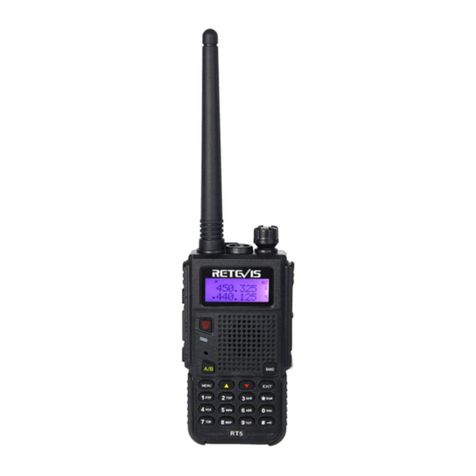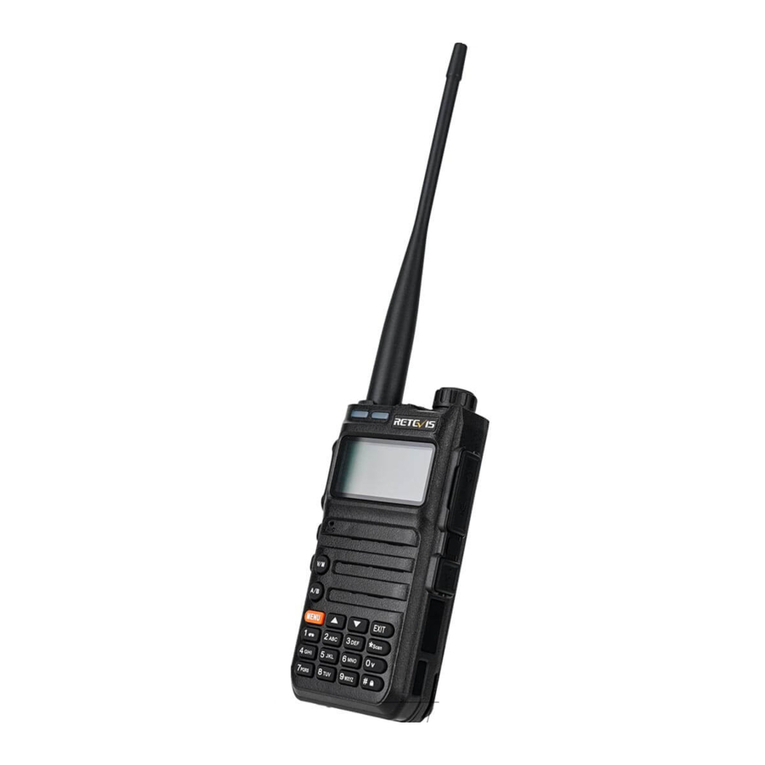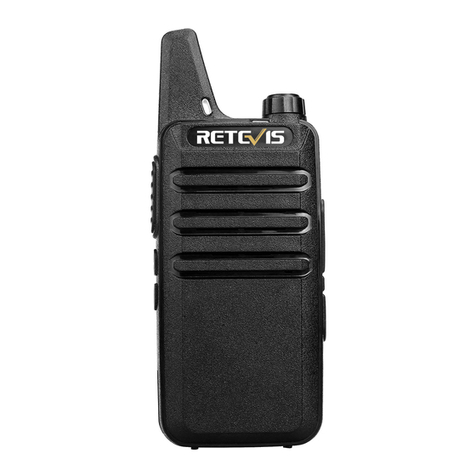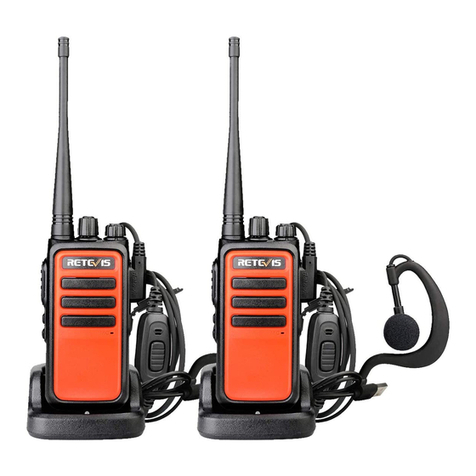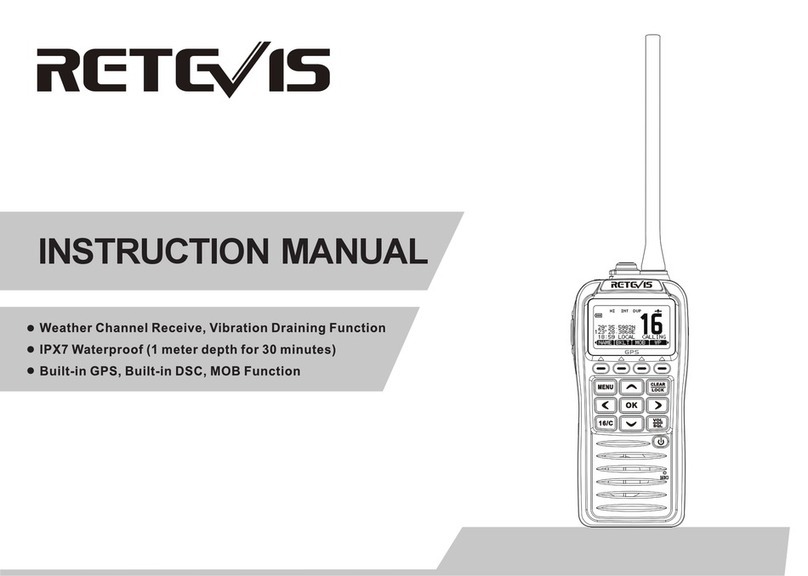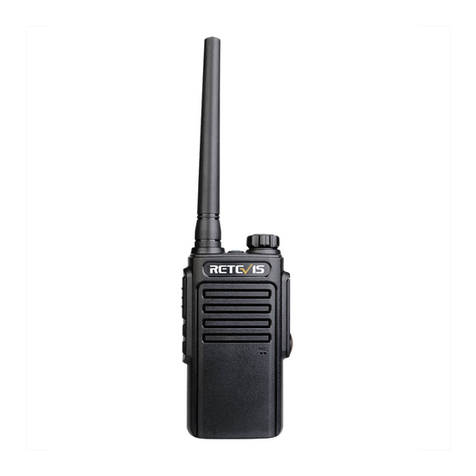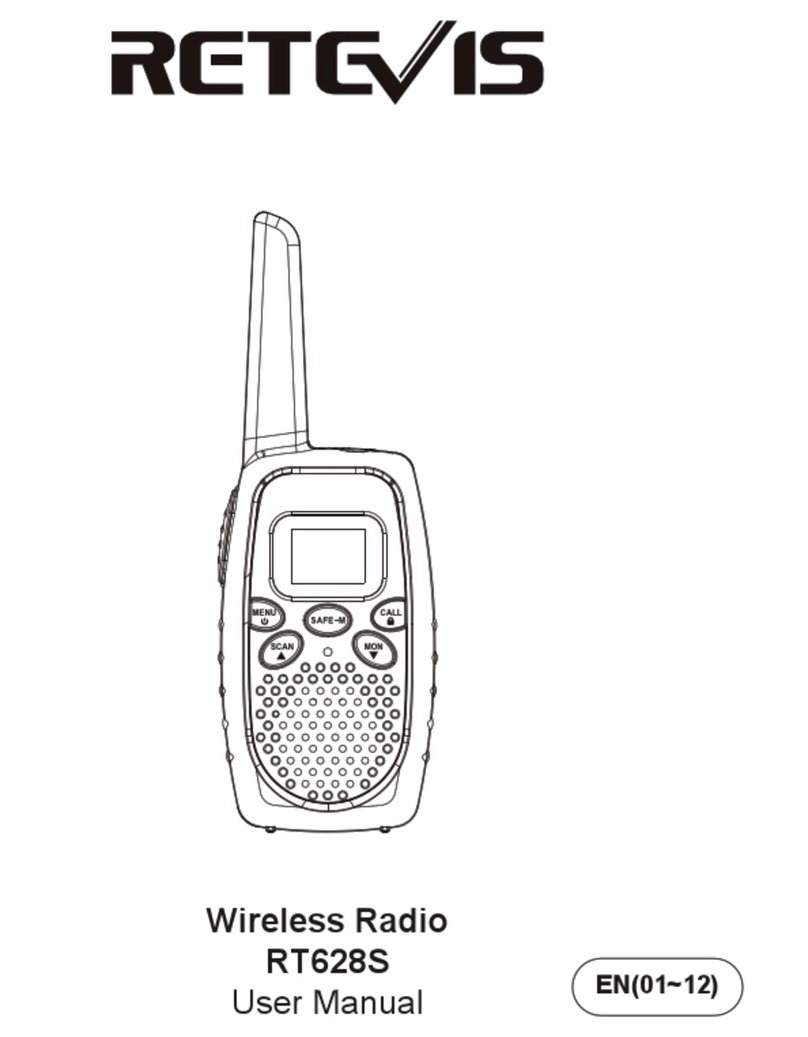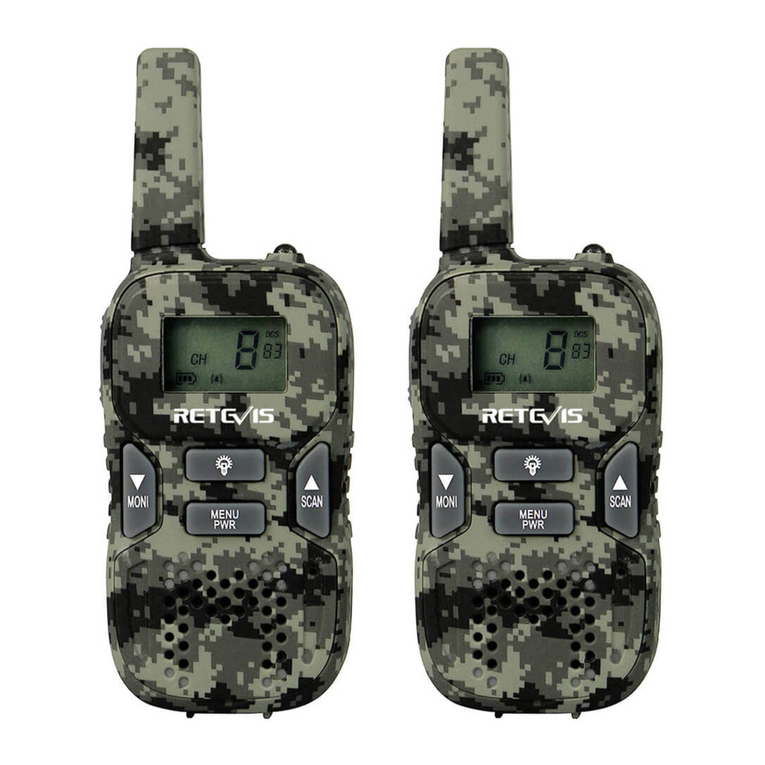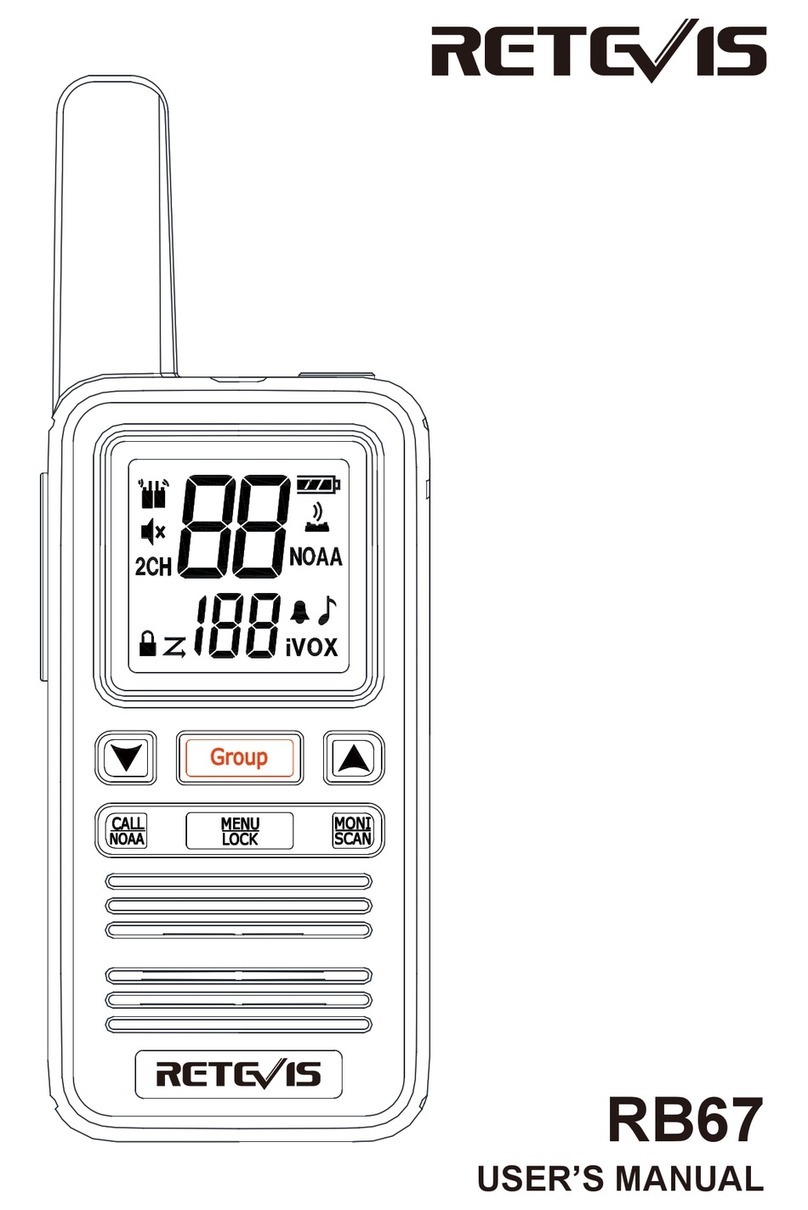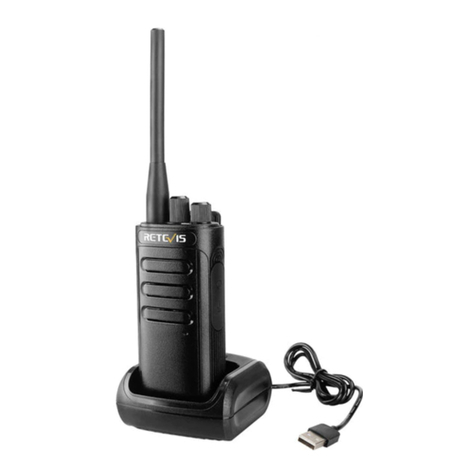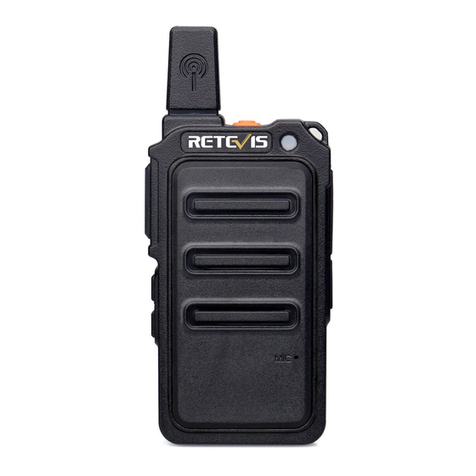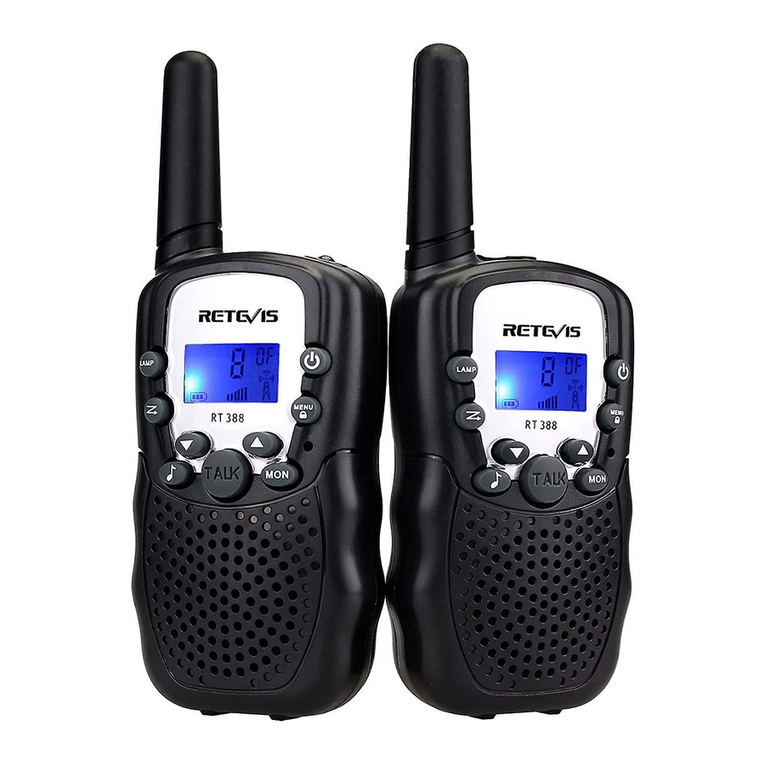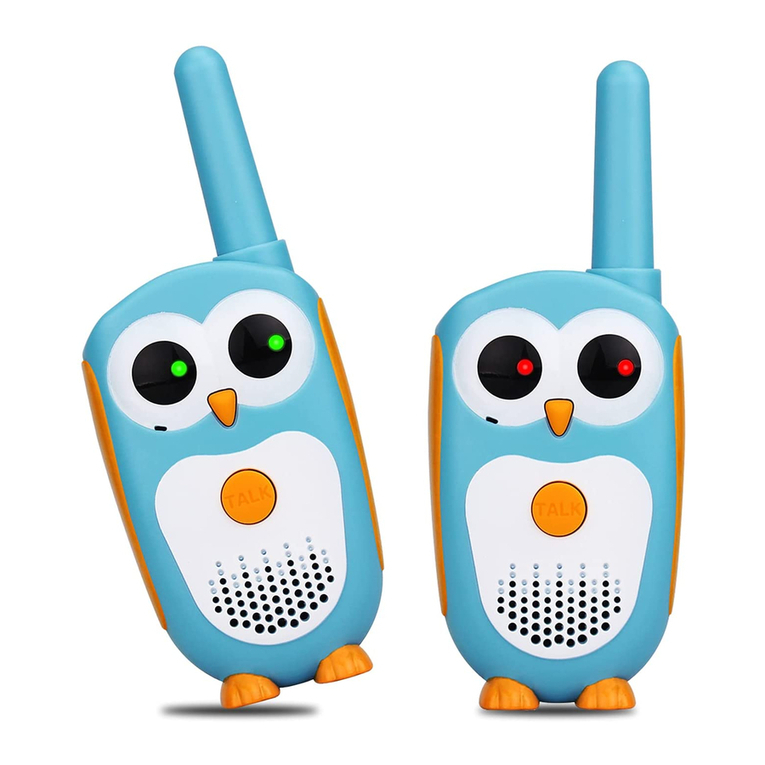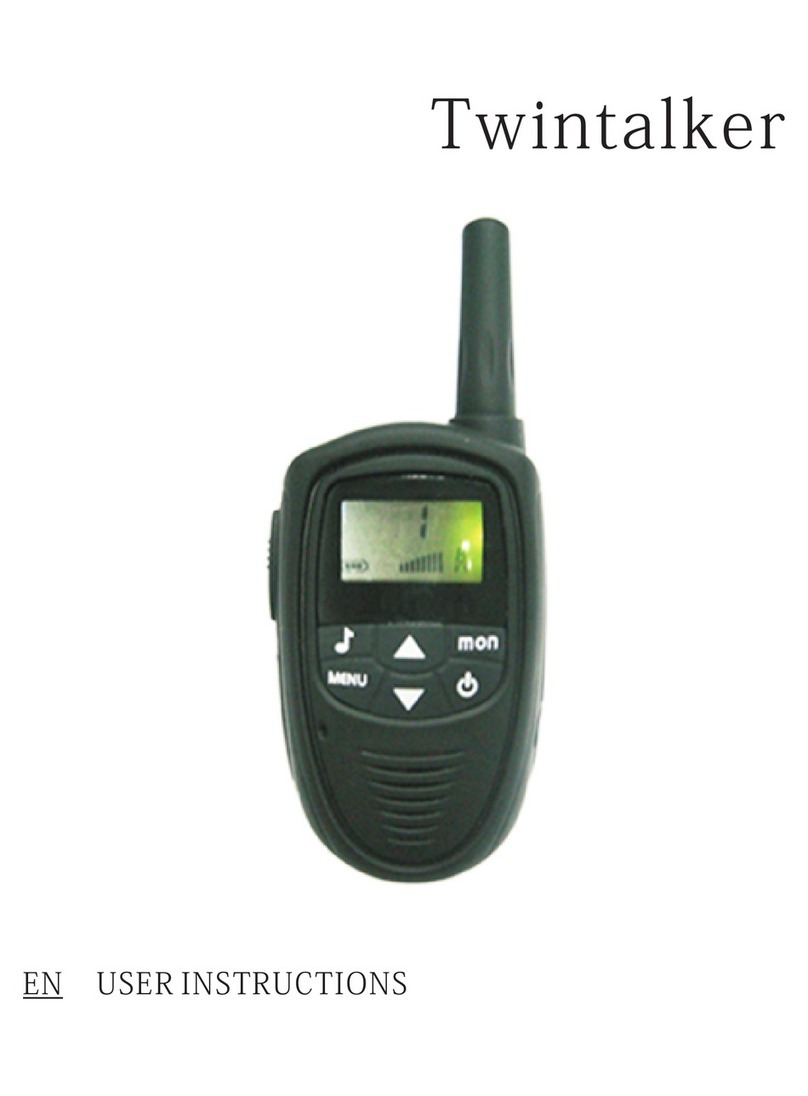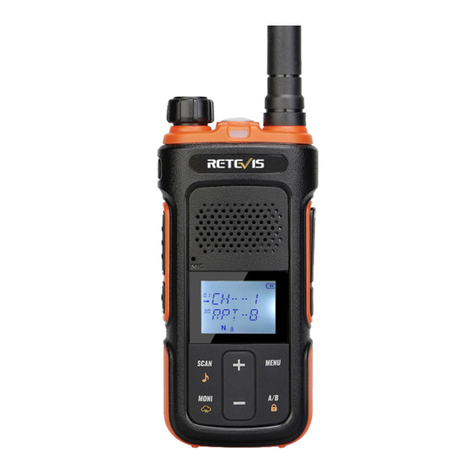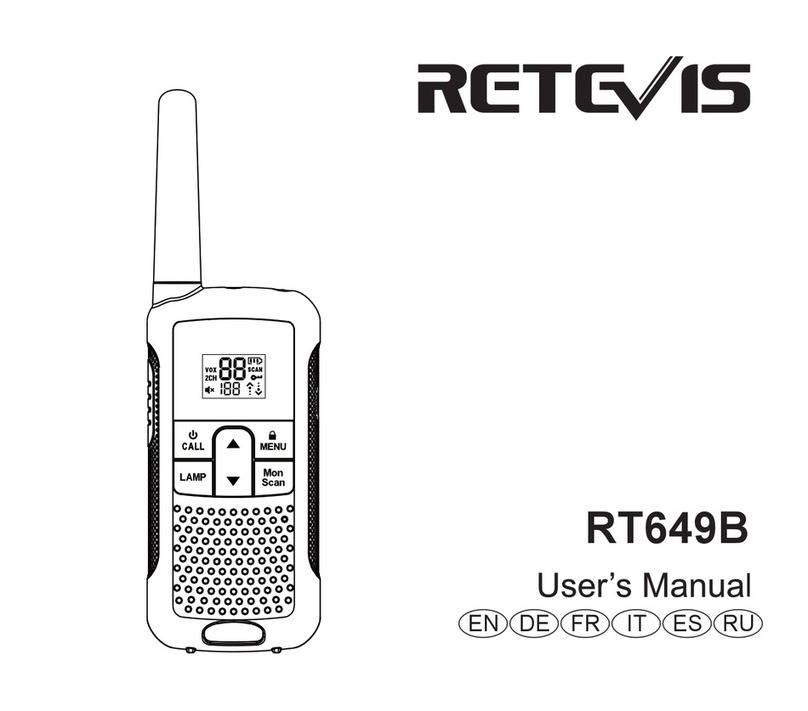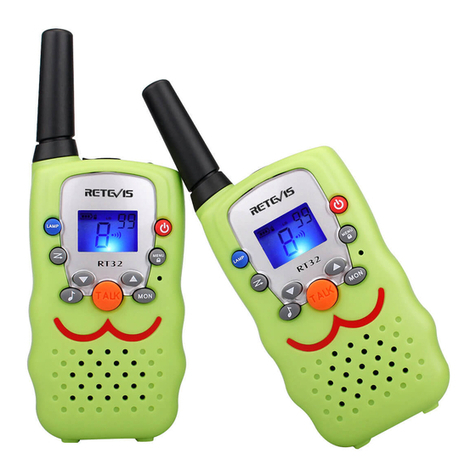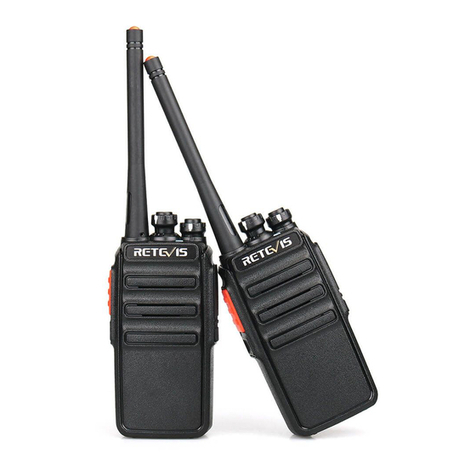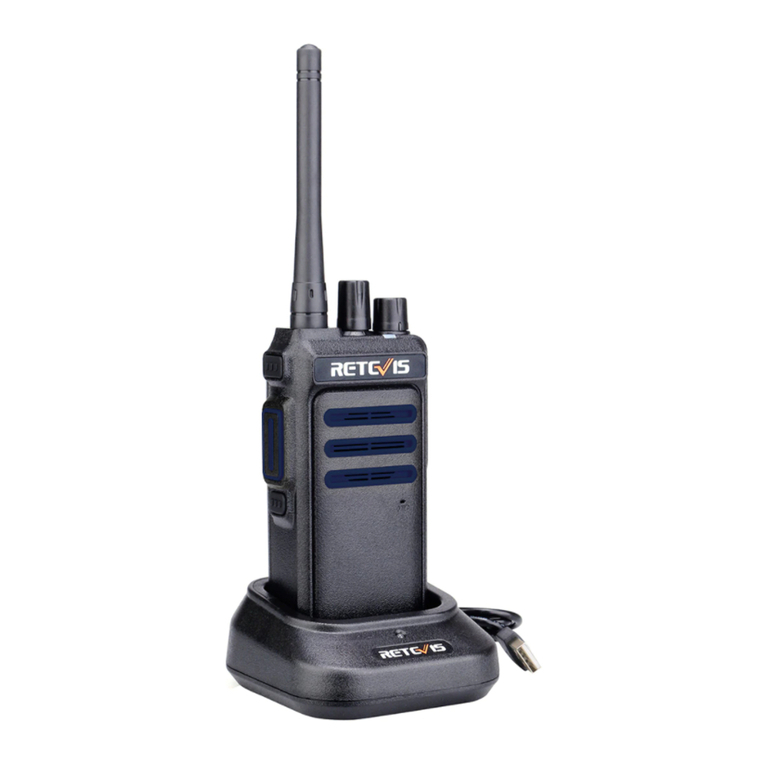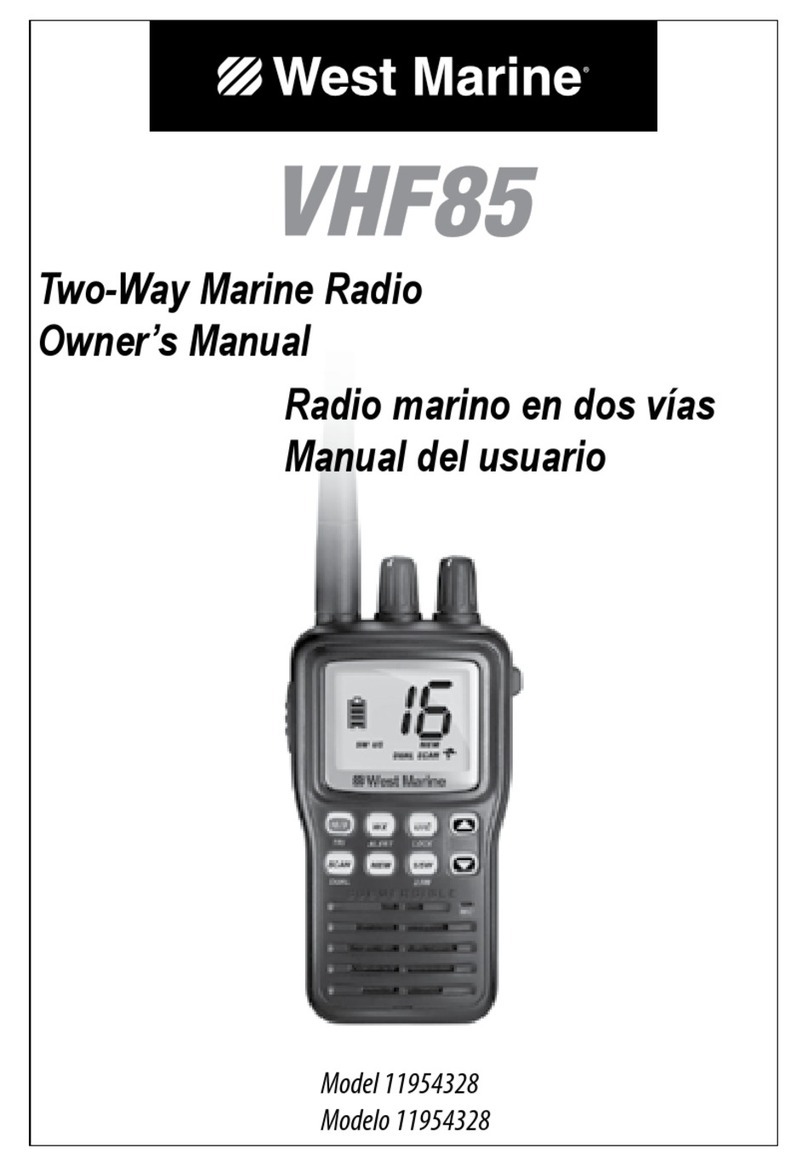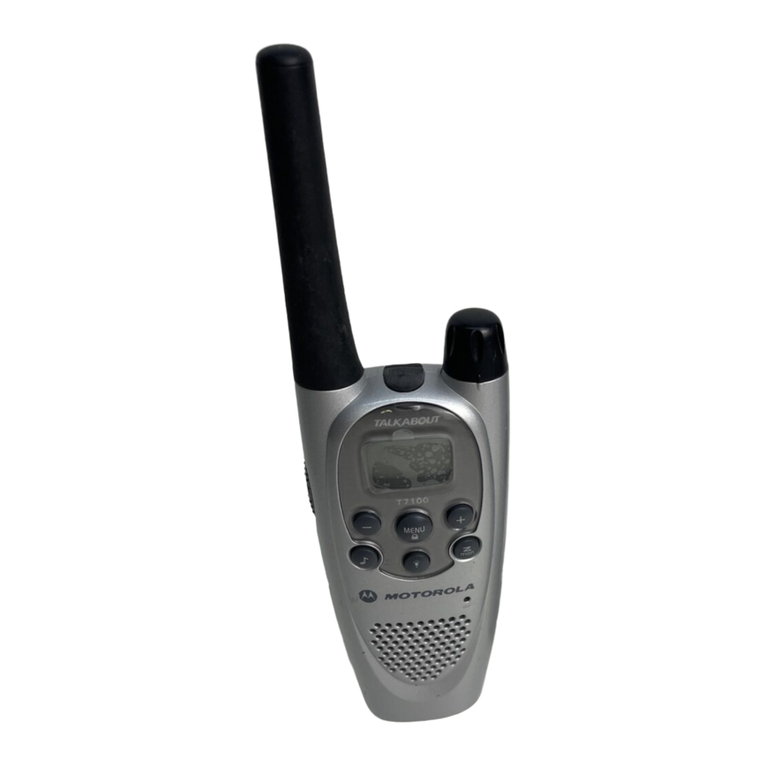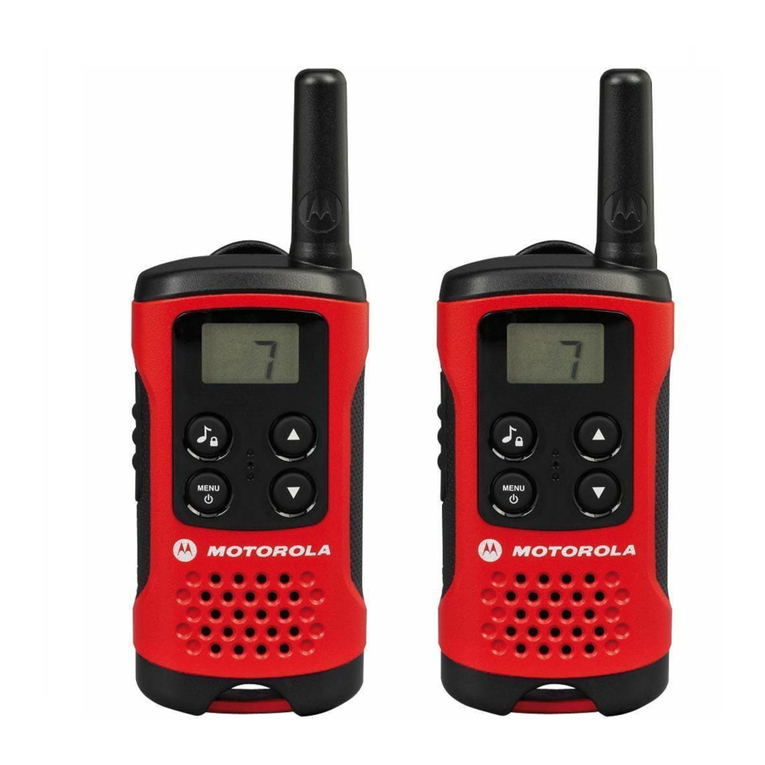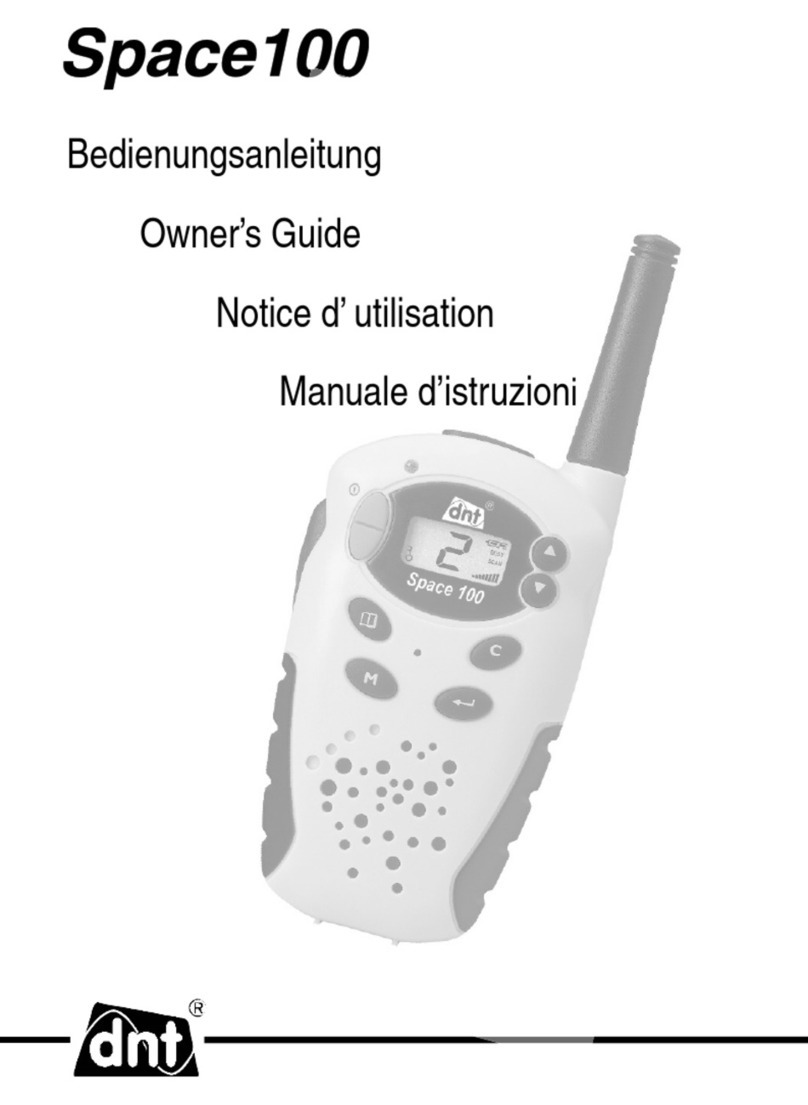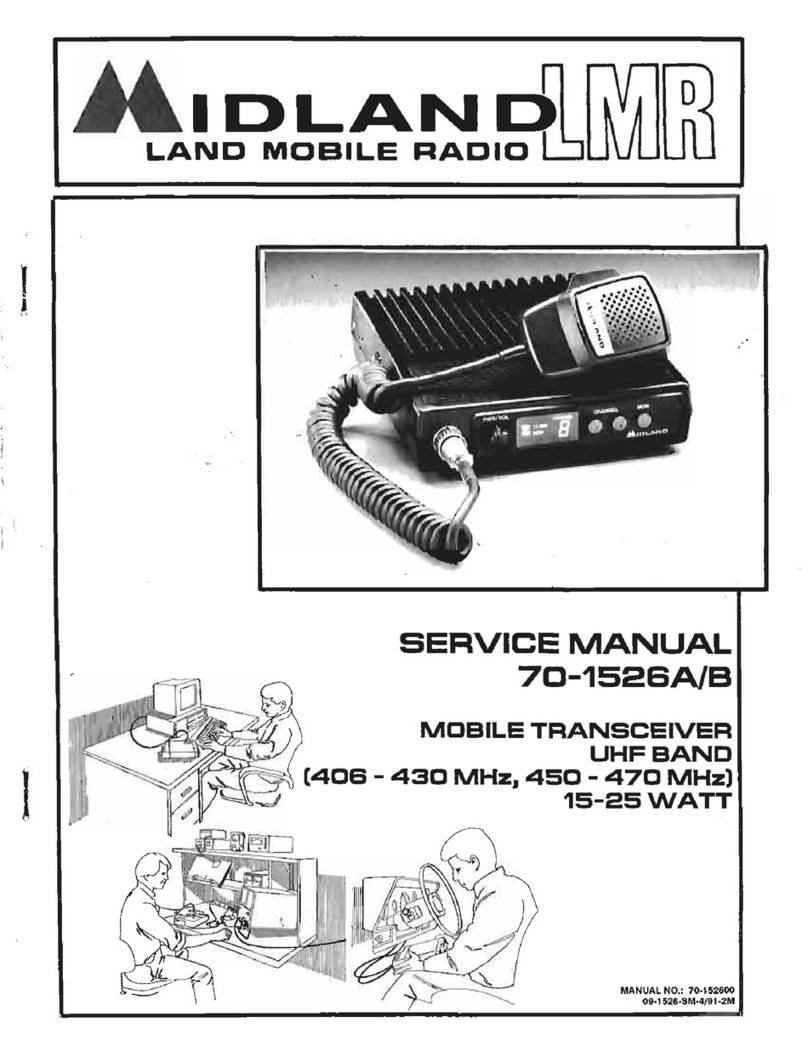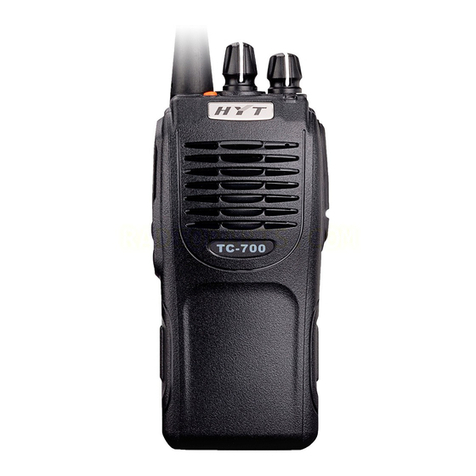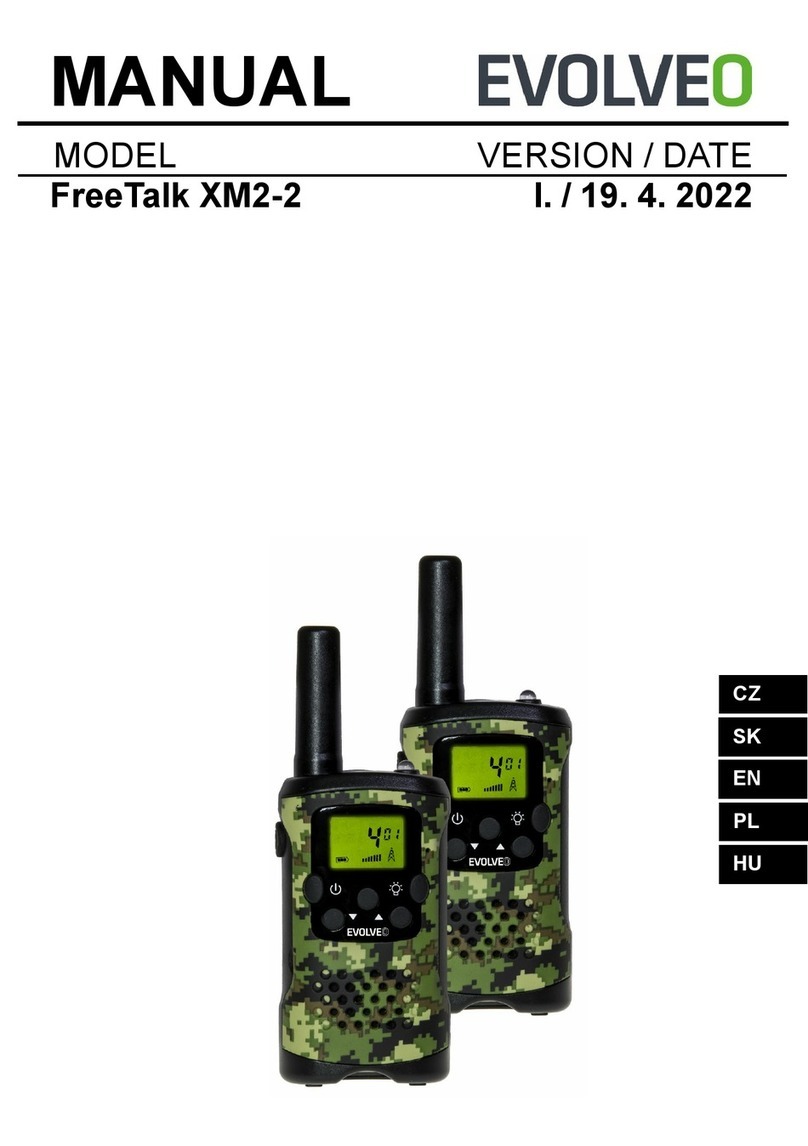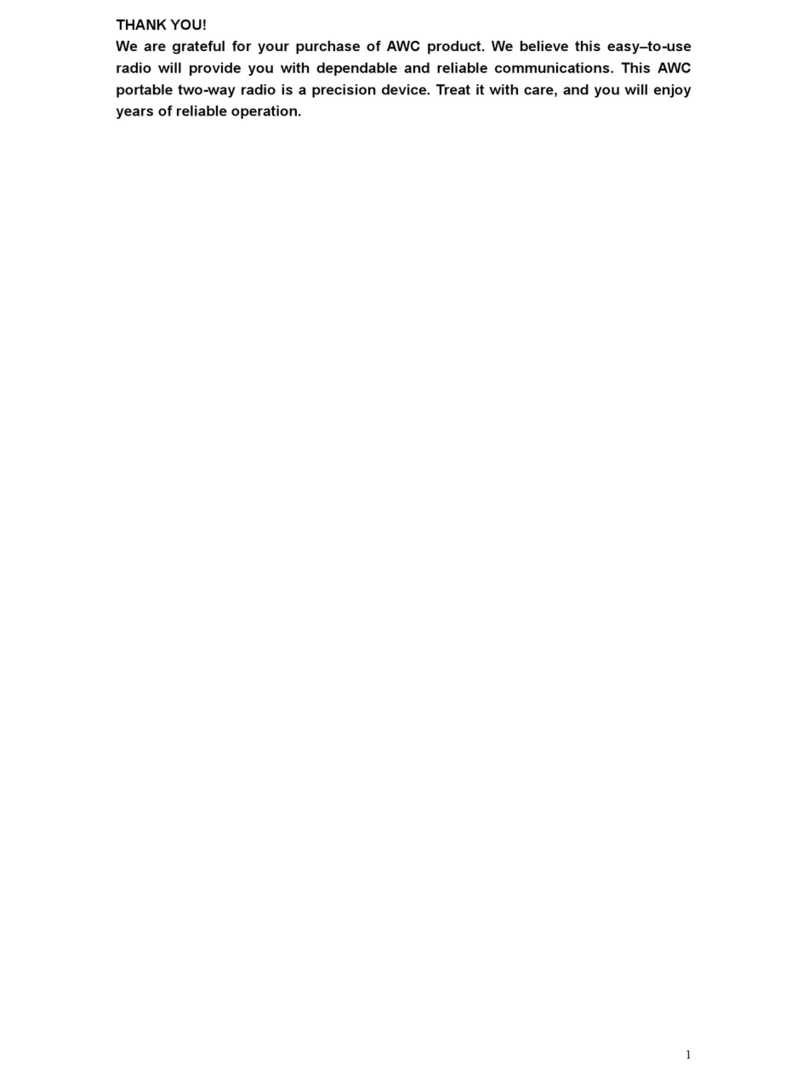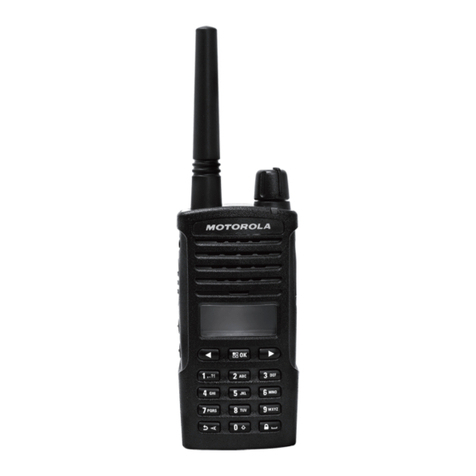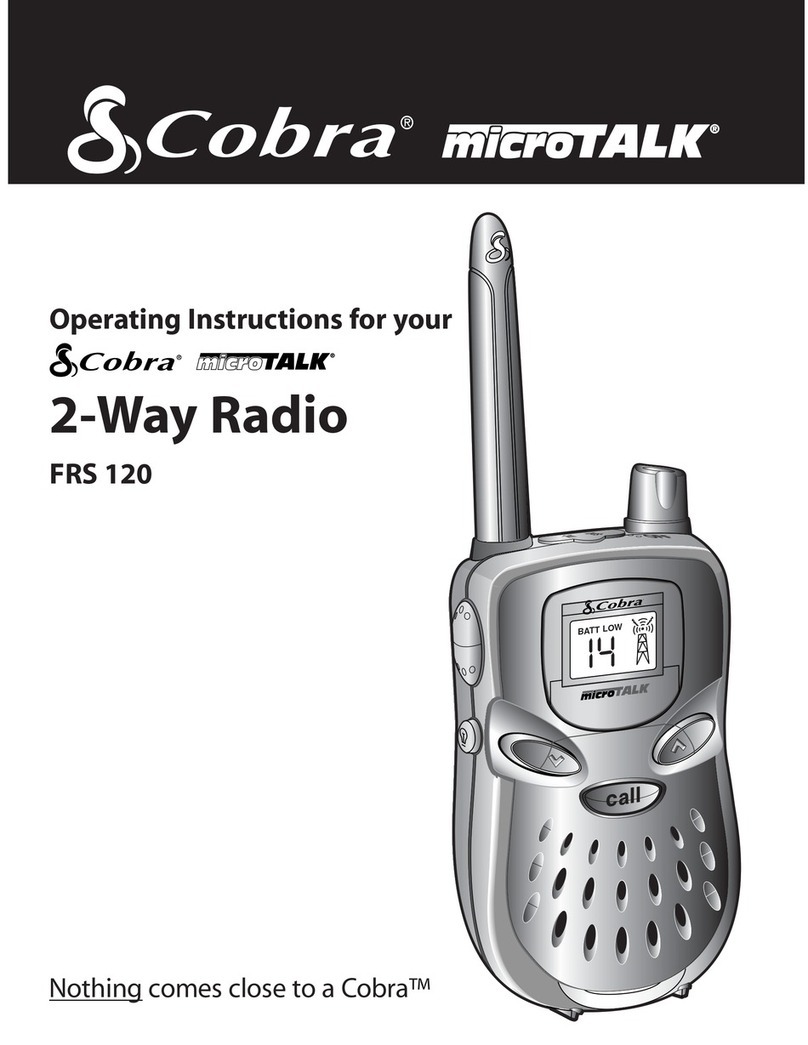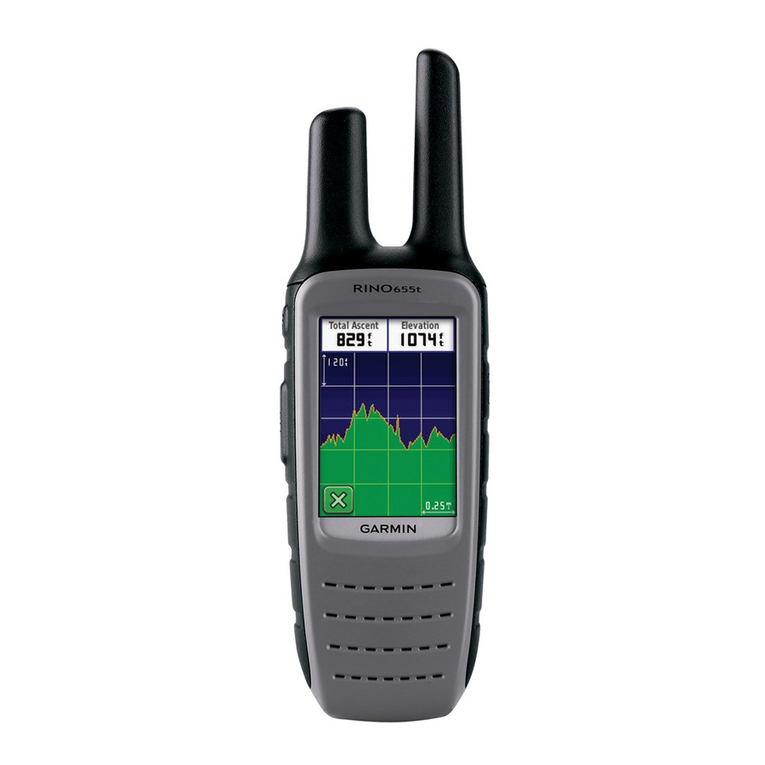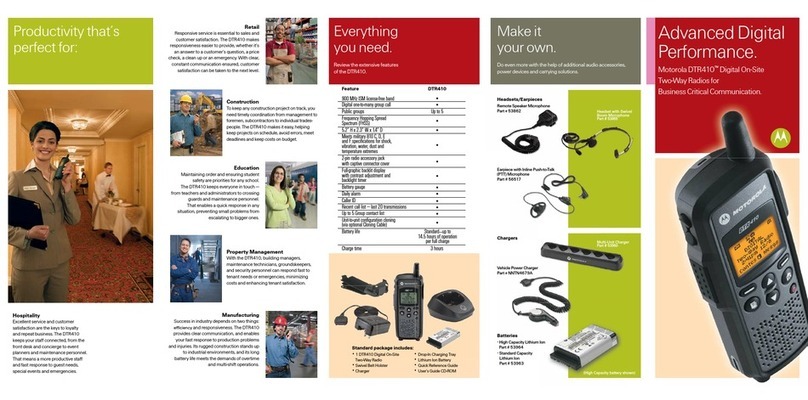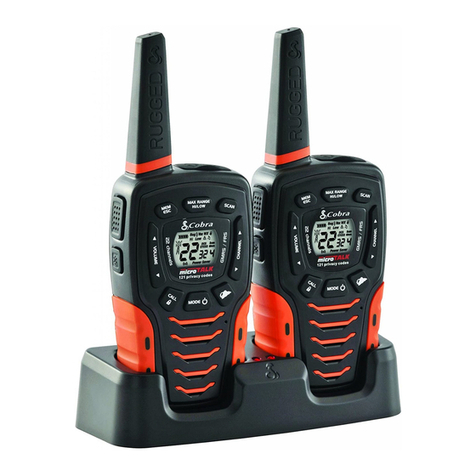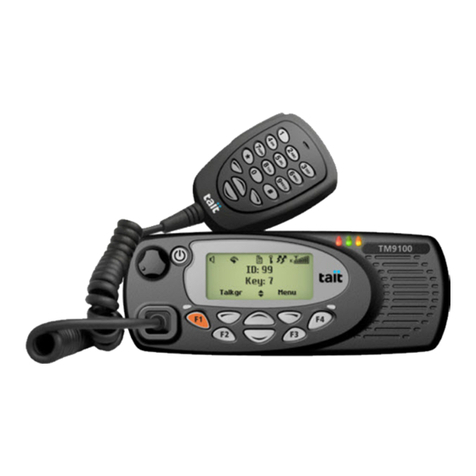
Privacy Code
Privacy Codes
Set CTCSS Privacy Codes
Your micro TALK radio incorporates two advance coded squelch systems
that can help to reduce interference from other users on any given
channel. CTCSS (Continuous Tone Coded Squelch System) provides 38
privacy codes and DCS (Digitally Coded Squelch) provides 83 privacy
codes. This provides a total of 121 Privacy Codes. Either system can be
used on call channels, but both systems cannot be used on the same
channel at the same time.
To successfully communicate using a privacy code, both the sending and
receiving radios must be tuned to the same channel and to the same
privacy code system (CTCSS or DCS) and privacy code the number. Each
channel will remember the last privacy code system and number you
select.
The privacy code 00 is not a privacy code, but allows all signals the
CTCSS and DCS systems.
To select a CTCSS privacy code:
1.After selecting a channel, press the Menu/Power button
until the CTCSS icon appears and the small numbers
next to the channel number flash on the display.
If DCS is turned on at the channel selected, the display
will flash the CTCSS icon and “OFF”. To switch from
DCS to CTCSS, press the Up or Down button while the
display is flashing “OFF”. The display will then show the
small numbers flashing and you will then be able to
proceed to step 2.
2.Press using the Up or Down button to select a privacy
code. You can hold the Up or Down button for fast
advance.
3.When your desired CTCSS privacy code is displayed,
choose one of following:
a.Press the Menu/Power button to enter the new setting
and proceed to other functions.
b.Press and hold the Menu button to enter the new
setting and return to Standby mode.
c.Press PTT or Call/Lock button to enter the new setting
and return to standby mode.
d.Do not press any buttons for 15 seconds to enter the
new setting and return to Standby mode.
6

